


Framed or unframed, desk size to sofa size, printed by us in Arizona and Alabama since 2007. Explore now.
Shorpy is funded by you. Patreon contributors get an ad-free experience.
Learn more.

- Tough Guys
- Lost in Toyland
- And without gloves
- If I were a blindfolded time traveler
- Smoke Consumer Also Cooks
- Oh that stove!
- Possibly still there?
- What?!?
- $100 Reward
- Freeze Frame
- Texas Flyer wanted
- Just a Year Too Soon
- WWII -- Replacing men with women at the railroad crossing.
- Yes, Icing
- You kids drive me nuts!
- NOT An Easy Job
- I wonder
- Just add window boxes
- Icing Platform?
- Indiana Harbor Belt abides
- Freezing haze
- Corrections (for those who care)
- C&NW at Nelson
- Fallen Flags
- A dangerous job made worse
- Water Stop
- Passenger trains have right of way over freights?
- Coal
- Never ceases to amaze me.
- Still chuggin' (in model form)
Print Emporium
Hoosier Gothic: 1938
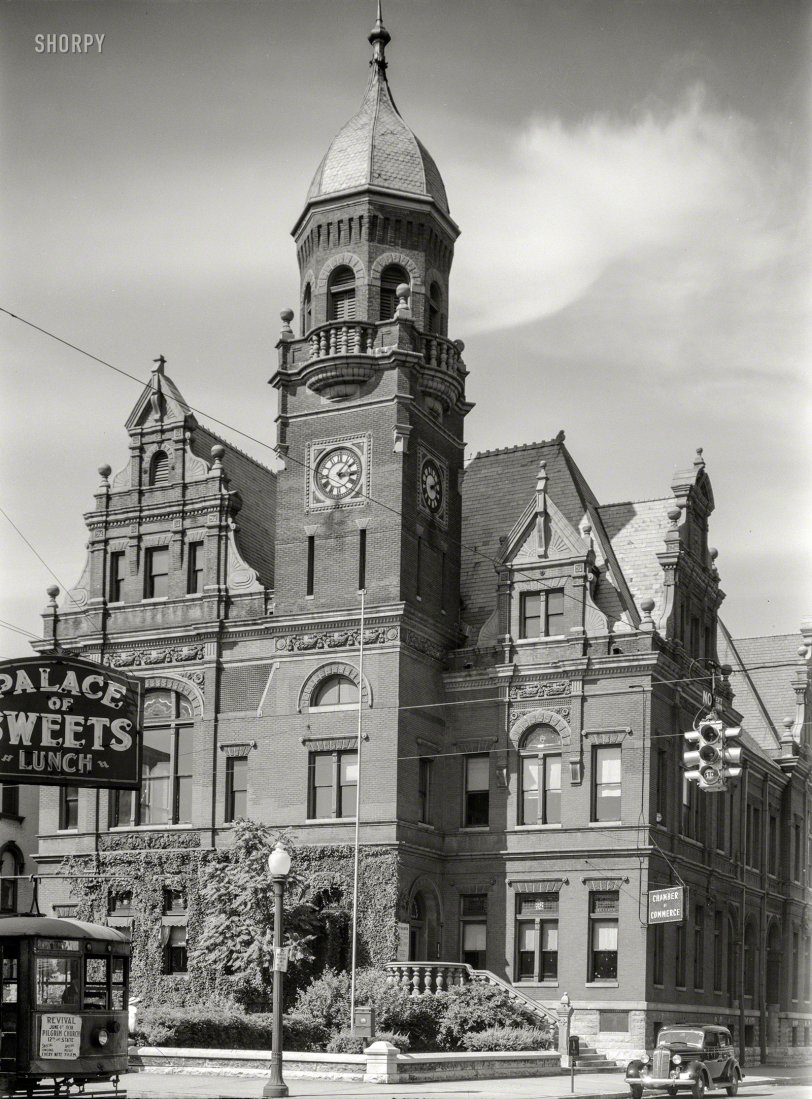
June 1938. "City hall and courthouse in Vincennes, Indiana." Behold the Palace of Tweets, formerly known as the White House. Medium format negative by Arthur Rothstein for the Resettlement Administration. View full size.
Darley C-811
The aluminum colored signal is a Darley C-811. I actually own this signal and it's hanging in my shop. It was originally installed in Atlanta in the 1930s. So here's the deal with color placement.
THree-color vertical railroad signals typically had red at the bottom because the indication was more in alignment with the view of railroad engineers. (The original lamps weren't very bright.) Some of the first traffic signals used that same convention.
Several makes of early traffic signals (like this one) only used three bulbs, one per section, that shone in all four directions. In those instances red on the cross streets had to be on the bottom and green on the top.
Eventually a standard was adopted where red would always be on top and green on the bottom, the logic being that motorists were more likely to see the "upper" color above vehicles in front of them, and red was the most important color. A standardized placement also helped people with color-blindness.
Palace Of Tweets
Young folks think they invented the internet.
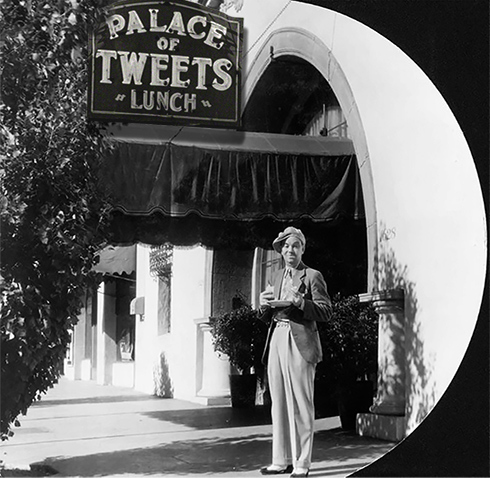
Traffic signal ID
The traffic light in the photo is not a Darley despite the "Stop" on the bottom. It's locally produced by Tokheim, the oil tank and gas pump maker -- a Model 1200 aerial signal with command lenses.
It was produced from 1926 onward. In 1938 this division was sold off to Automatic Signal of Norwalk, Conn., and shortly thereafter all variations of this design were discontinued. They had a decent sized market in the Midwest. Indiana, Ohio and Michigan all are known to have their signals, several hanging until just recently.
They were impressively constructed affairs, thick cast aluminum, thick glass, heavy steel hangers. The one in the photo weighed around 120 pounds. Their Achilles' heel was the poor quality of foundry aluminum used, very dirty and porous. Coupled with the signal collecting moisture, despite drain holes, meant the bottom often rotted out quickly. Pretty much any remaining in service were repaired.
Green on the top wasn't too unusual for the 1920s and '30s. Even in lights like this one, which used 12 bulbs, green on the top/bottom was done for various reasons including distinguishing the main street from the side street to aid in navigation.
I have one in my collection, from Batavia, Ohio. (On the left.)
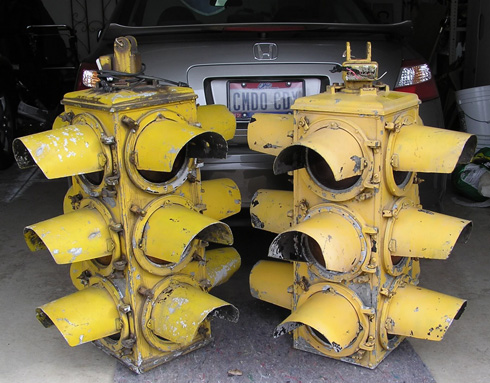
Old Post Trail
"But the evidence is along the Old Post Trail, a road which takes one on a pilgrimage to 28 historic shrines."
Chicago Tribune (hit Read in the upper right of the box):
Fourth and Main
A photographic history of Vincennes reports that "the City razed the building in 1950 in an effort to devote Main Street exclusively to commerce." Two city halls later, the beauty of this 1887 icon has not exactly returned.
I think
the sign on the corner says "Old Post Trail."
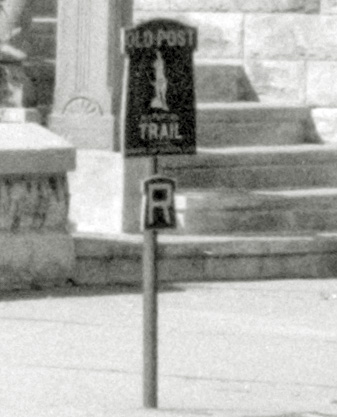
The one lone automobile is:
a 1936 Dodge 2dr sedan with a nice pair of accessory fog lamps.
Stop and Go
The signal is a Darley, and yes there is one bulb for each level. The lenses are sought-after items.
Can anybody read the wording on the sign on the corner?
Clock Tower, Gothic?
Alright, I'm waiting for the little Goth man to pop out on the little balconies and announce, what, the time? The king's audience dates? Gotta be a use for all that fancy shmancy brickwork.
What to do?
Would it be too sinful to stop and have a bite at the Palace of Sweets before going to the Revival Meeting at the Pilgrim Church?
Sideways traffic lights
Quebec has them mounted sideways. Threw me for a loop the first time I saw them. Takes a bit of getting used to. Well, that, and the French road signs.
Stoplight arrangement
As described by tterrace's description could the arrangement of the lights be a way to simplify the wiring and only use one bulb for each light position? i.e. one bulb to illuminate both the red and green lenses simultaneously.
Green Light Stop
The green light is lit up with "Stop"?
[Some early signals were designed to display red-yellow-green from top to bottom on the main street and green-yellow-red from top to bottom on the cross street. -tterrace]
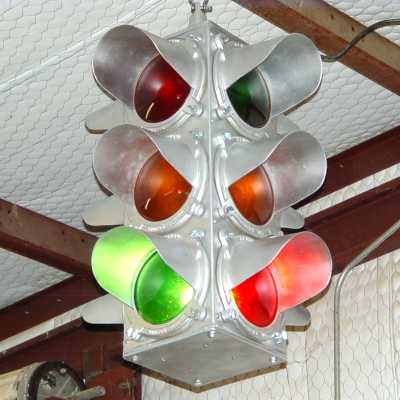
























On Shorpy:
Today’s Top 5